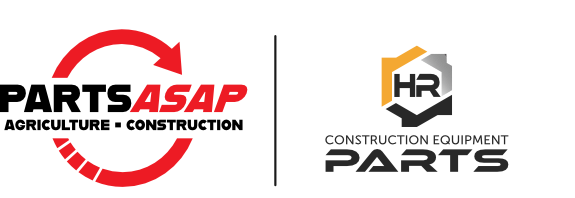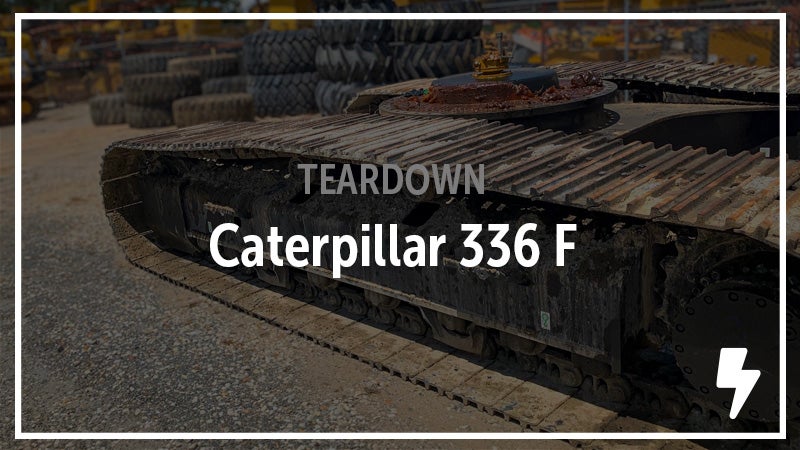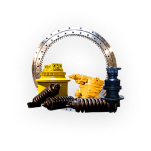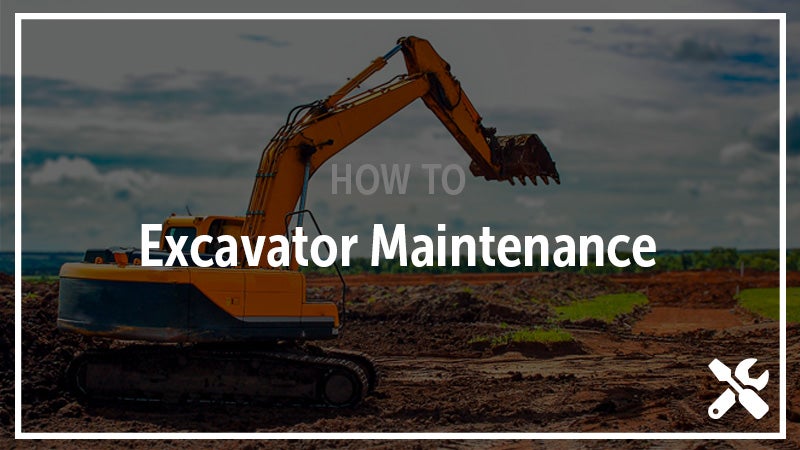
8 Tips for Simple Excavator Maintenance
The excavator’s of today are often versatile workhorses — routinely called upon to dig trenches, excavate holes, break apart large materials, and transport items around a worksite. And even though they’re designed to handle the toughest jobs, day in and day out, no part on an excavator will last forever. Still, with a little maintenance and care, the times between parts replacements and repairs can be extended to their limits.
With increasing costs across the entire construction industry and lingering parts supply issues, everyone is looking for ways to maximize the life of their parts. For many, the simplest fix is a renewed focus on keeping what they have now working well for its longest. To help, we’ve put together these 8 excavator maintenance tips.
Know Your Excavator Inside and Out
Every excavator operator knows behind their seat is an operator’s manual that is full of helpful and insightful information from maintenance schedules to the locations of grease zerks to basic tips for better operation. Your operator’s manual is the first source of wisdom for a smart maintenance plan, but knowing your machine is often about more than what’s in the manual. A good maintenance plan can be directed to the history of the machine from the worksites it has faced to the ground conditions and materials it's handled to the basics of how it's generally run.
Having a solid history of your machine can inform where and when you’ll focus your attention for maintenance. You can even extend your history by keeping a simple record of work in the cab. Did the excavator spend a week in the swamp? Did it work overtime in intense heat? Did it spend a month digging in hard materials? With a little background, sudden surprises can be shifted to expected maintenance and tackled before they become downtimes.

Keep Excavator Coolers, Filters, and Fans Clean
Changing out filters on schedule is always a simple way to prevent issues from developing in your excavator, and it also has the added benefit of ensuring your machine is running as efficiently as possible. You can further extend that efficiency check by consistently monitoring and cleaning coolers and filters. As they collect debris, coolers and filters are forced to work harder to do their jobs and that can cascade to the entire machine leading to critical parts being forced to work harder or work under less than ideal conditions.
Especially when you find yourself working in dirty and dusty environments, taking time to check any parts that are critical to cooling the machine can be a simple way to spot and stop a problem before it becomes a real issue.
Check the Condition of Your Bucket or Attachment
Everybody’s been to a worksite where the attachment at the end of a hardworn excavator is closer to a sieve than a bucket. Sometimes getting the last few digs out of the bucket is simply a requirement of the job, but as a bucket fails it loses efficiency. Checking the teeth or cutting edge and general health of the bucket periodically can help you diagnose and repair issues to extend the bucket’s life.
The attachments at the end of an excavator arm are asked to perform intense and repetitive tasks and keeping them well maintained can reduce the number of actions required and the time it requires to perform jobs.
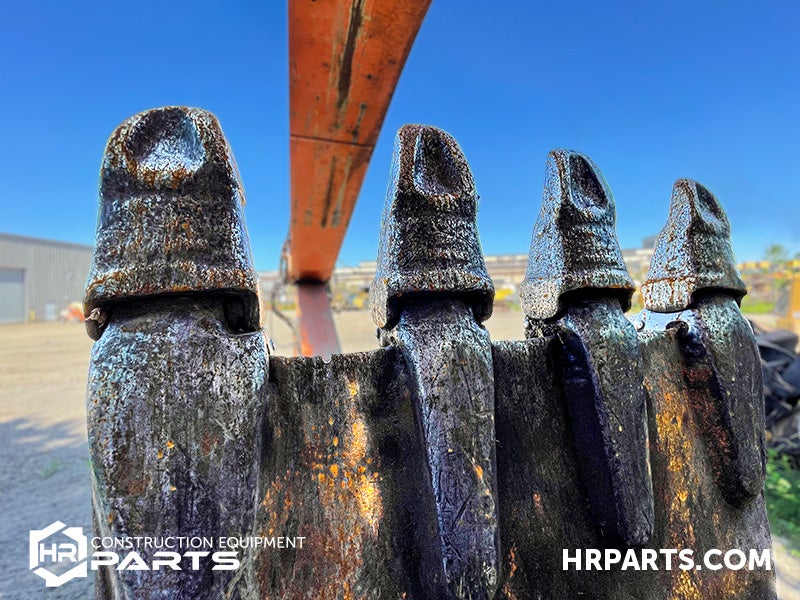
Ensure Tracks Are Clean and at Proper Tension
The undercarriage on an excavator is consistently the mostly costly point for maintenance and repair on a machine. Couple that with the time it can take to repair undercarriage issues and you’ll quickly see how even the shortest increase in the lifespan of undercarriage parts can lead to large reductions in maintenance costs. One of the simplest tasks to extend the life of the undercarriage is to consistently check and correct the tracks for proper tension.
When tracks are too loose the machine can lose efficiency and even lose its tracks. When the tracks are too tight extra force is applied to other parts in the undercarriage and parts become more likely to wear out prematurely. Since ground conditions and the loading of debris into the track can change track tension rapidly, it’s important to check and clean tracks during operation, not just at the start of the day.
Lubricate and Clean Your Slewing Ring and Surrounding Parts
One of the aspects that gives an excavator its unique advantages on a worksite is the ability for the housing to rotate freely and infinitely from the undercarriage. Often though, the critical parts that allow this to happen can be neglected in importance. Like any rotating part, keeping the slewing ring properly lubricated will extend its life and monitoring lubrication in the system can help spots issues in advance — if you find metal grit in the lubricant you might not be able to stop the slewing ring from going bad, but at least you’ll be able to plan ahead for the repair.
Because of where the slewing ring and swing motor sit on the machine, they are also prone to collect dirt and debris. As this builds up, it forces these parts to work harder to spin the house, and since they sit at a point that is often not immediately visible, build-up might not be noticed. Taking a few minutes to check this area and remove debris is an important part of any maintenance plan.
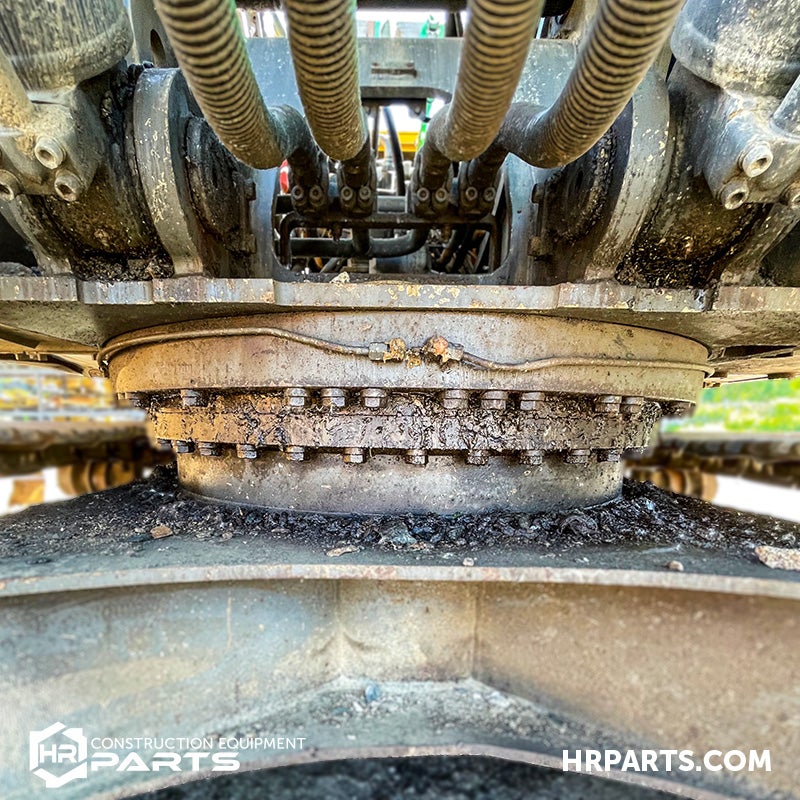
Consistently Monitor Fluids and Keep Them at Proper Levels
Probably everybody has been on a tight deadline and decided, “I should do it now, but I’ll just check the fluids tomorrow.” And most times those little breaks in a maintenance plan won’t add up to much of an issue, but if an issue in oil level or quality goes unfound the effects can be catastrophic to a machine. An experienced operator knows that routinely checking the fluids in a machine is a two minute task that can prevent hours of downtime.
Beyond just ensuring proper levels, checking fluids for debris both visually and by rubbing a little of the fluid between your fingers can help you spot issues brewing inside of your excavator. Since debris in fluid and fluid at improper levels can lead to inefficiency in the overall machine, these quick checks are also a consistent way to ensure efficiency losses are avoided.
Pay Extra Attention to Your Final Drives
Well-built and well-maintained final drives can provide years of problem-free work, but their location and the nature of their work also mean they can be prone to damage. Though all excavator manufacturers take precaution to protect final drives from impacts, their location in the undercarriage can position them in a spot where not every impact is avoidable and even slight bumps or jolts are common. When an operator takes into account the frequent nature of a final drive’s work and the complexity of the parts inside the final drives it should be clear that even slight impacts, operating with low fluid, or being allowed to overheat can have devastating effects.
Since replacing a final drive is more than a simple swap, taking time to ensure the final drives are operating properly and well-maintained can save considerable costs in both time and parts.
Routinely Inspect Your Hydraulic Cylinders
As far as parts go, the hydraulic cylinders on an excavator may not rank as the most complex on the machine, but a failing hydraulic cylinder can often lead to a downtime that seems unproportional to the part. While some cylinder failures are unavoidable and sudden, often with a little extra vigilance issues like leaking seals, losses in power, and non-fluid movement will show themselves and lead to minor corrections and maintenance, instead of all out hydraulic cylinder replacements.
Inspecting hydraulic cylinders can also lead to discoveries about how the machine is being operated, like signs of side loading, and if a failing cylinder is discovered, it can allow you to search for a replacement in advance to align planned downtime with the repairs.
No part on a hard-working, in-demand excavator will last forever, but spending time to develop and stick to a maintenance plan can ensure you maximize the life of your parts as much as possible.
If an excavator part does fail, we’re here to help. As a top dismantler of excavators and with a long and respected history in the business, we take pride in connecting our customers to the part that will get them back up and running — quickly, simply, and at great prices. You can search our site or just call one of our Parts Specialists.
